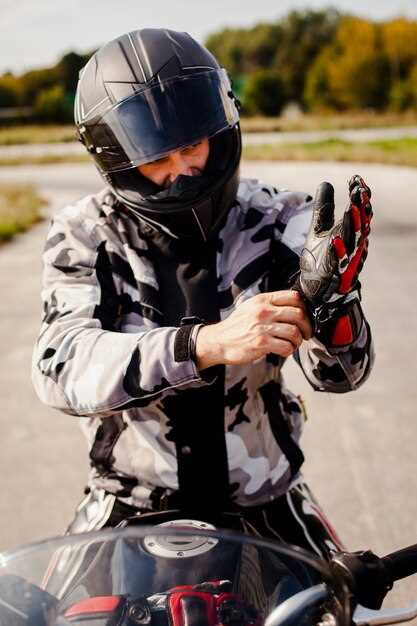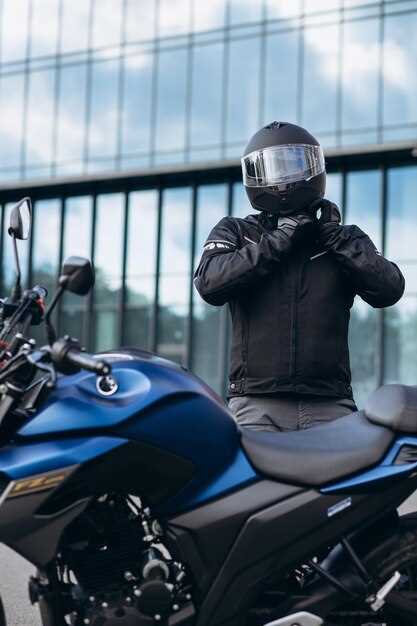
When it comes to motorcycle riding, the thrill of the open road is often accompanied by a heightened risk of accidents. This is where the right gear becomes essential for ensuring your safety. Motorcycle armor is designed to protect riders from the impact of falls and collisions, reducing the likelihood of severe injuries.
The importance of investing in quality armor cannot be overstated. In many cases, this protective gear can be the difference between a minor scrape and a life-threatening injury. Features such as impact-resistant padding, reinforced stitching, and abrasion-resistant materials work together to defend against the hazards associated with motorcycle riding.
Furthermore, comfortable and properly fitted armor encourages riders to wear their protective gear consistently. This not only enhances safety, but also allows for a more enjoyable riding experience. Riders who prioritize their well-being by equipping themselves with the proper armor can confidently navigate the roads, knowing they have taken significant steps to protect themselves.
Understanding the Different Types of Motorcycle Armor

Motorcycle armor plays a crucial role in enhancing safety while riding, providing riders with essential protection against impacts and abrasions. Understanding the various types of motorcycle armor is vital for making informed decisions about gear selection.
The most common types of motorcycle armor include back protectors, elbow and shoulder pads, knee and hip armor, and chest protectors. Each type serves a specific purpose and caters to different areas of the body that are vulnerable during accidents.
Back protectors are designed to shield the spine from injury during a fall. They come in various shapes and thicknesses, often constructed from rigid materials or flexible foams to absorb impact energy effectively. Elbow and shoulder pads offer protection at critical joint areas, providing stability and preventing dislocations or fractures during collisions.
Knee and hip armor are essential for safeguarding the lower body. Knee armor is often integrated into riding pants, while hip armor can be found in specific motorcycle jeans or shorts. These pieces not only prevent abrasions but also cushion the impact of falls, reducing the risk of serious injuries.
Chest protectors are increasingly common in motorcycle jackets and are designed to absorb shock to the chest area. They are particularly important for riders who participate in off-road or competitive riding, where the risk of direct impacts is higher.
When selecting motorcycle armor, consider the level of protection offered, the comfort and fit of the gear, and any specific riding conditions you may face. Look for armor that meets safety standards and features various grades of protection to suit your riding style.
Ultimately, investing in quality motorcycle armor is a proactive step toward enhancing overall safety while riding, providing peace of mind and essential defense against potential injuries.
How Proper Fit and Coverage Can Enhance Your Protection

Choosing the right motorcycle armor is critical for ensuring maximum safety while riding. Proper fit is essential because ill-fitting gear can lead to gaps in coverage, leaving vulnerable areas exposed during an accident. Armor should sit snugly against your body, allowing for adequate mobility without compromising protection. If the gear is too loose, it can shift or slide off in the event of a fall, significantly reducing its effectiveness.
Coverage is equally important. High-quality motorcycle gear provides protection not just for high-impact areas like shoulders, elbows, and knees, but also for less commonly considered areas such as the back and hips. Full coverage ensures that every part of the rider’s body is shielded from potential injury. When selecting armor, look for designs that extend down the length of the arms and legs, as well as options that include back protectors and chest armor.
Additionally, consider materials used in the armor. Advanced synthetic fabrics and impact-absorbing foams enhance the protective qualities of your gear, while still allowing for comfort and flexibility. When the armor fits properly and provides comprehensive coverage, riders can enjoy greater confidence on the road, knowing they are better safeguarded against unpredictable situations.
Maintenance Tips to Ensure Your Motorcycle Gear Remains Reliable
Proper maintenance of your motorcycle gear is essential for ensuring maximum protection and comfort. Following these tips will help keep your armor in reliable condition:
-
Regular Inspection:
Check your gear regularly for signs of wear and tear. Look for damaged stitching, frayed edges, or cracked armor components. Early detection can prevent further damage.
-
Cleaning:
- Follow manufacturer instructions for cleaning your gear. Use appropriate detergents for different materials.
- Remove dirt and debris that can compromise the armor’s integrity. Regular cleaning helps maintain visibility and overall aesthetics.
-
Storage:
Store your gear in a cool, dry place away from direct sunlight. Avoid stacking heavy items on top of armor to prevent it from losing its shape.
-
Avoid Harsh Chemicals:
Use only recommended cleaning products, as harsh chemicals can degrade the materials and armor effectiveness.
-
Replace Worn or Damaged Armor:
If you notice any cracks or significant damage to your armor inserts, replace them promptly. Deteriorated armor cannot provide the necessary protection.
-
Check Straps and Closures:
Ensure that all straps, zippers, and closures function properly. Replace any faulty parts to guarantee a secure fit and optimal safety.
Taking these maintenance steps seriously will extend the life of your motorcycle gear and ensure your armor remains effective in protecting you on the road.
